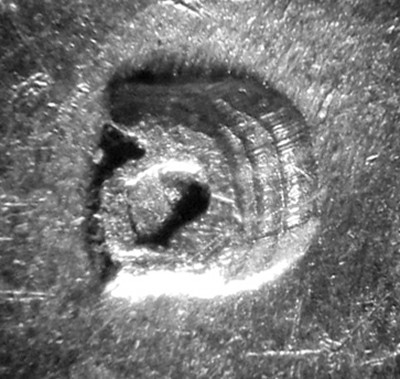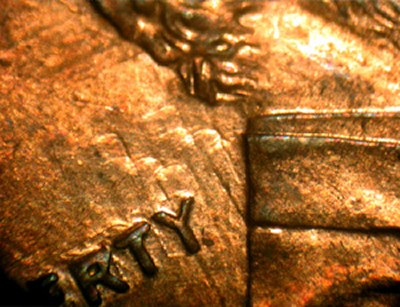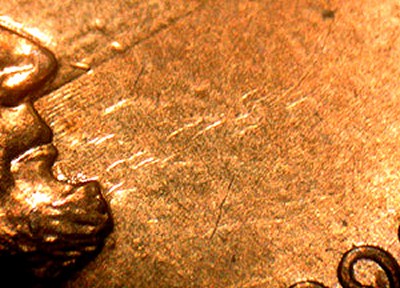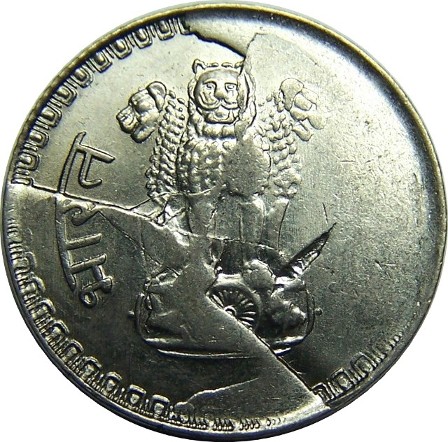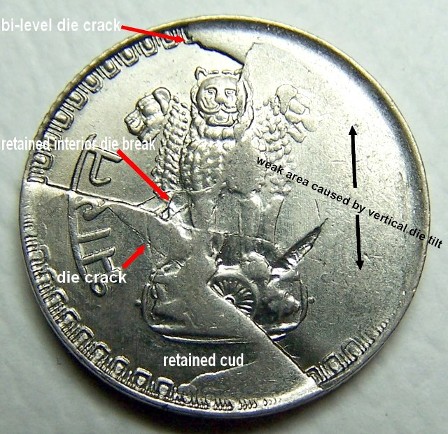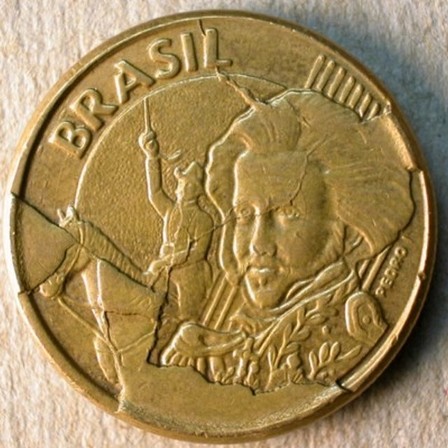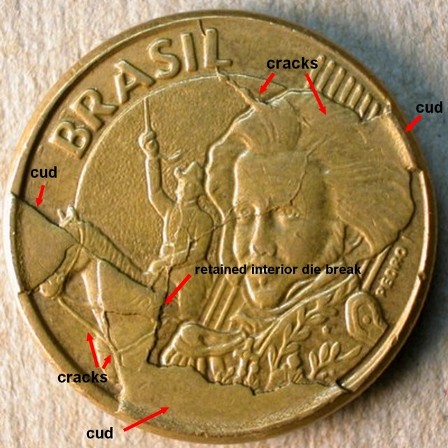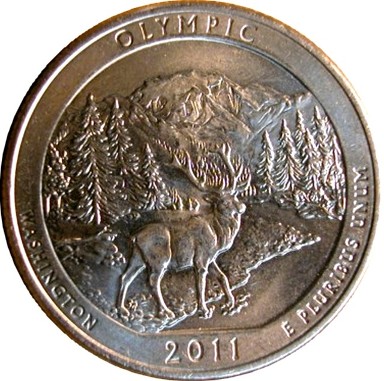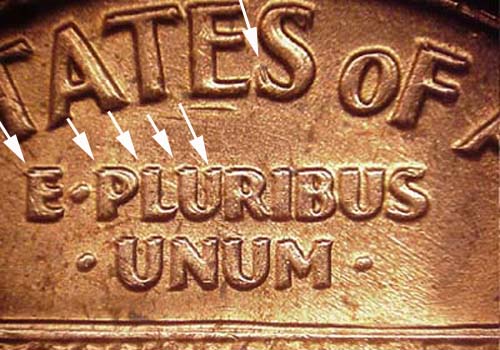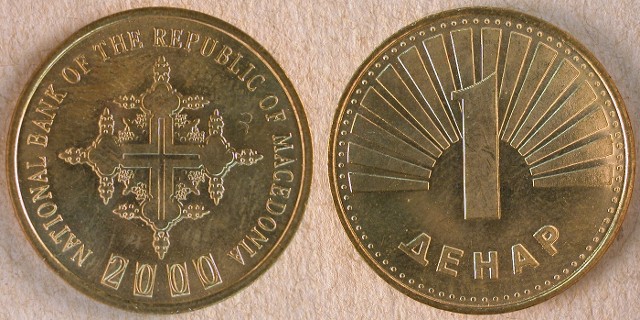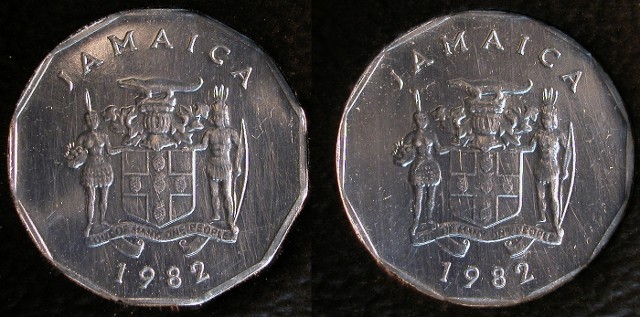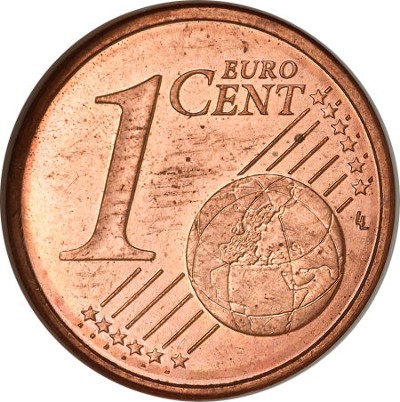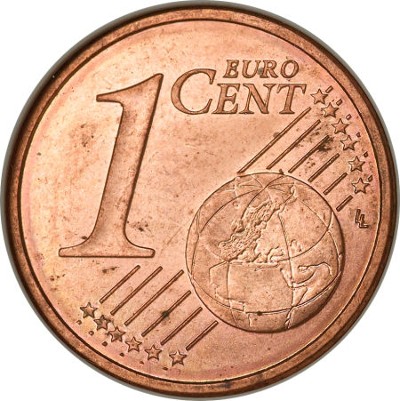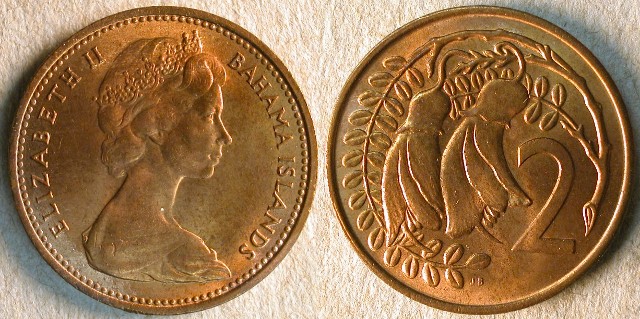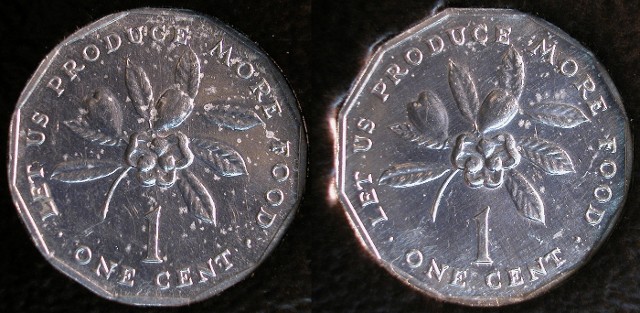PART VI. Striking Errors:
Counterbrockages:
Multiple Counterbrockages
Definition: A counterbrockage is an expanded and distorted image (raised and normally-oriented) that is generated when a brockaged coin is struck into a planchet.
A single counterbrockage is rare enough, but the 2007 India 1 rupee coin shown below is a double counterbrockage of the reverse design on the reverse face. Detailed images with companion information as to how this double counterbrockage may have occurred is further below.
As with most 1 rupee coins, the reverse face was struck by the hammer die.
First, here are two images with the left being our double counterbrockage and the right being a normal 1 rupee coin.
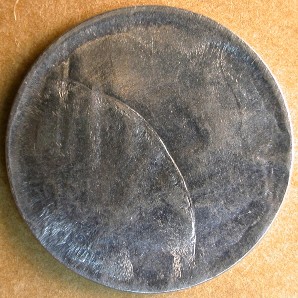
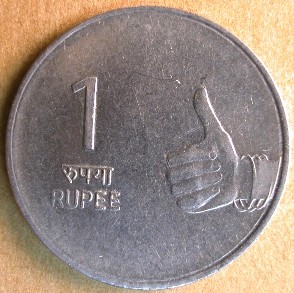
Directly below are three images with the counterbrockage design elements labeled on the left half of the coin. Features of uncertain status are labeled with a question mark.
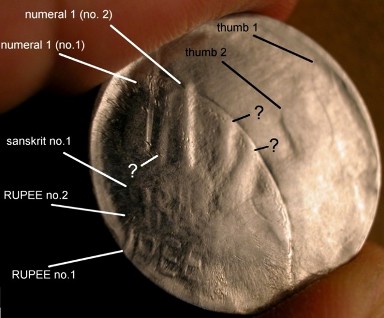
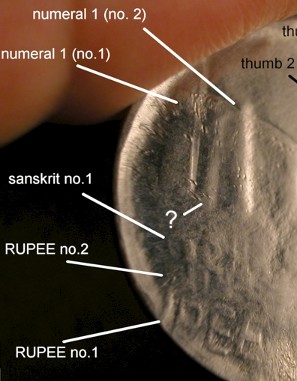
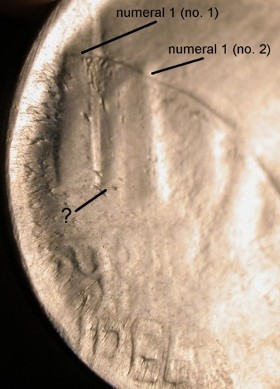
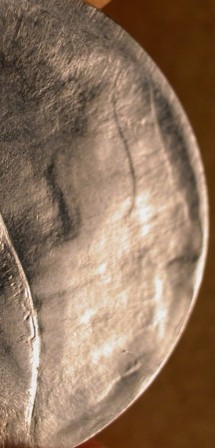
A close-up of the right side of the reverse showing the two upraised thumbs. The more peripheral thumb is larger and clearer. The curled fingers 2-5 can be faintly discerned down and to the left of the thumbs.
A close-up of the two versions of “RUPEE” (the smaller one very faint) and the Sanskrit letters above them.
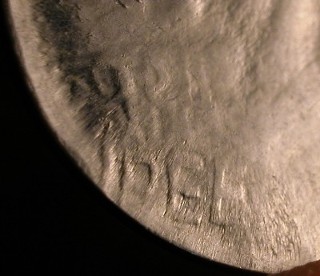
With respect to the thumb and the word RUPEE, these more peripheral design elements are larger and more distorted than the versions that lie closer to the center of the coin. The puzzling thing is that these more peripheral elements are also clearer than the more centrally located ones. Ordinarily, the more expanded a counterbrockage is, the less clear it is.
There are at least four scenarios that can be invoked to explain the appearance of this coin. None assumes more than one strike.
Scenario 1. The coin that created the counterbrockage was, itself, struck against a double-struck rupee. That would have left a double brockage of the reverse design on the obverse (bottom) face of the coin. The problem with this scenario is that both sets of design elements should be the same size and one set (representing the earliest strike) should be decidedly incomplete.
Scenario 2. The coin that created the counterbrockage could have been double-struck against a single 1 rupee coin, with movement between each strike. The problem here is that there is too much spread between “primary” and “secondary” counterbrockage design elements and the spread is radial, rather than offset.
Scenario 3. The coin that created the counterbrockage could have been double-struck against two different 1 rupee coins. This is highly unlikely, given the close association between “primary” and “secondary” counterbrockage elements. There is also little chance that two different coins would have been so perfectly placed beneath the coin that would eventually generate the counterbrockage.
Scenario 4. This is by far the most complex scenario, but it has much to recommend it. It entails four steps.
- The coin that created the counterbrockage was originally fed into the striking chamber as an unstruck planchet on top of a normal rupee. The two were struck together and the top coin stuck to the reverse (hammer) die. The bottom coin also remained in the striking chamber, seated on the obverse (anvil die).
- A fresh planchet was fed in between the original coins and the threesome were struck together. This caused the brockage on the top coin to spread out. The bottom coin’s raised design did not spread out much because it was confined by the collar.
- The middle coin was ejected and the top and bottom coins (now die caps) were struck against each other for a second time. This created a second, smaller brockage on the obverse (bottom) face of the top coin (hammer die cap). This second brockage was minimally expanded but not particularly clear as a result of the bottom coin being mashed in the previous strike by a planchet.
- The bottom coin is ejected and a fresh planchet is fed in. It is struck by the hammer die cap and is left with two counterbrockages, one peripherally located and one more centrally located.
Although Scenario 4 is quite complicated, it fits the facts better. Regardless of its accuracy, what IS clear, is that a very complicated chain of events must lie behind the creation of this wonder of an error.

